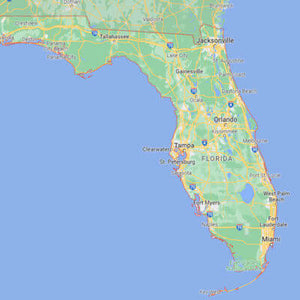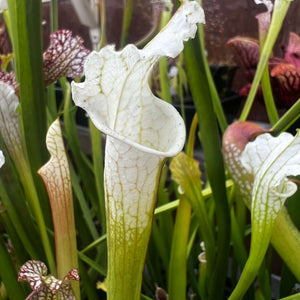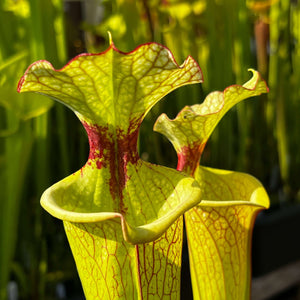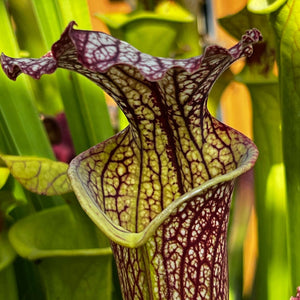Description of Menyanthes trifoliata (Bogbean)
Menyanthes trifoliata is a perennial plant that loves wet ground. People commonly call it Bogbean. You can find it growing in the wetlands, bogs, and along the edges of ponds and streams across Britain, Europe, Asia, and North America. Its looks and hardiness make it a good pick for water gardens and bog gardens.
What Does Bogbean Look Like?
Bogbean usually grows to a height between 30 and 60 cm. It has a creeping nature and spreads out as it grows. The plant creates rosettes of leaves that are glossy and dark green. Each leaf is trifoliate, meaning it has three separate leaflets. People often say these leaves look a bit like the leaves of a broad bean plant. The leaves grow from underground stems called rhizomes. These rhizomes help the plant colonise wet, muddy areas.
From May to June, Bogbean produces its flowers. Dense clusters of small, star-shaped flowers appear at the end of the stems. The colour is usually white, sometimes with a pinkish tinge. These flowers have a feathery look and are often fragrant. This scent attracts pollinating insects like bees and butterflies. The flowers create a bright display against the backdrop of green leaves.
How to Grow Bogbean
Menyanthes trifoliata grows best in full sun to partial shade. It needs soil that is consistently wet or even waterlogged. It is perfect for planting at the very edge of a garden pond, in a dedicated bog garden, or in shallow water. It can handle water up to 15–30 cm deep over its roots.
This plant is very hardy in the UK climate and can survive frost and cold winters. It is well-suited for naturalising around water features or in any part of the garden that stays damp.
Propagating and Looking After Your Plant
You can make new Bogbean plants by division or from seed. Division is often the easier and faster method. The plant spreads naturally via its rhizomes. To propagate by division, simply lift a clump in early spring or autumn and separate the rhizomes. Replant the divisions straight away.
Once established, Menyanthes trifoliata needs very little care. You might need to thin it out every few years if it starts to spread too much for its space. Removing the old flower heads after they fade can keep the plant looking neat.
Uses in the Garden and Beyond
Gardeners mainly use Bogbean as an ornamental plant for water and bog gardens. Its three-part leaves and delicate flowers add interest to damp, boggy settings. It is also very good for naturalising around the margins of a pond.
Beyond its looks, the plant has practical uses. Its roots help to stabilise muddy soil at the water's edge, which can prevent erosion. The plant also takes up excess nutrients from the water, which can help improve water quality in a garden pond. Historically, people used Bogbean in herbal medicine, but you should be very cautious as some parts of the plant can be toxic if used incorrectly.
Bogbean for Wildlife
Menyanthes trifoliata offers several benefits for local wildlife. Its dense foliage provides shelter for small aquatic creatures and insects. The flowers are a good source of nectar for bees, butterflies, and other pollinators. By including it in your pond, you help support the biodiversity of your garden.
It is a plant that does a real job in the ecosystem. It helps hold the soil together and filters the water, making it a valuable plant for a healthy pond environment.
A Final Point on Growth
Bogbean is a vigorous plant that can spread quite quickly in the right conditions. In a small garden pond or a confined bog area, you may need to manage its growth. Regular division every few years will keep it under control and stop it from crowding out other moisture-loving plants.
With its attractive foliage, pretty flowers, and wildlife value, Menyanthes trifoliata is a superb choice for any garden with a pond, stream, or boggy area.

 UK-grown carnivorous plants
UK-grown carnivorous plants




